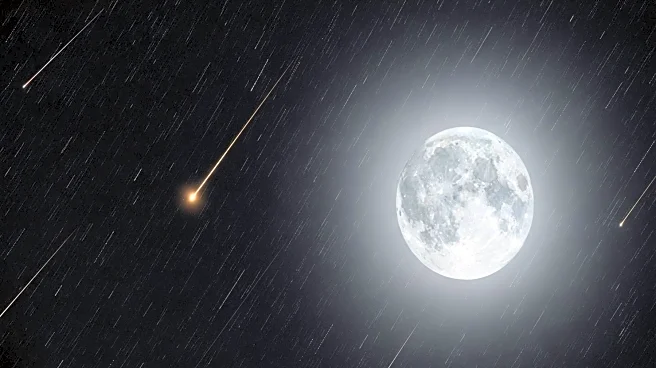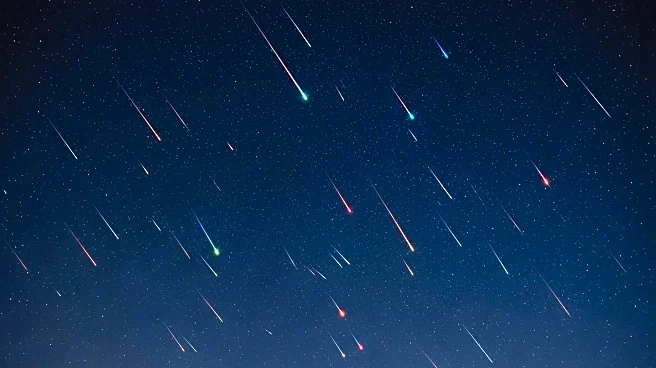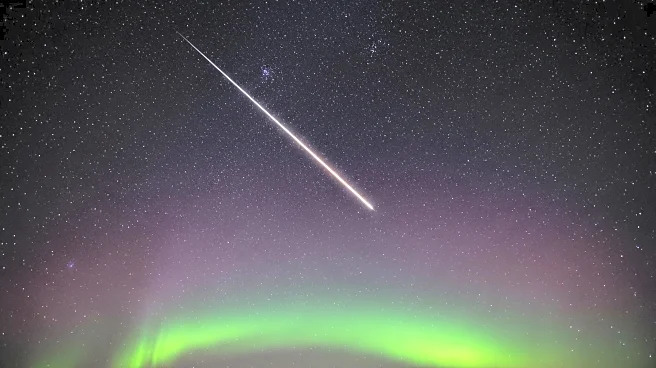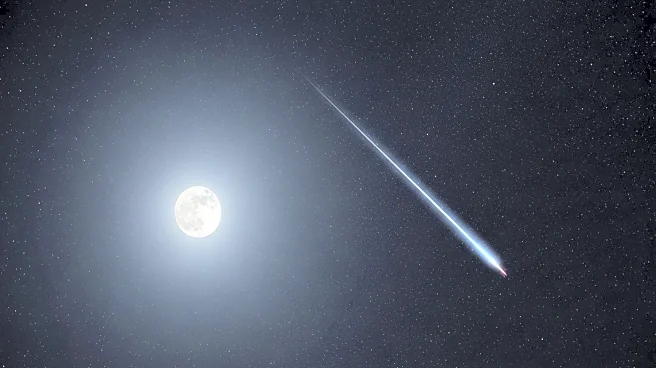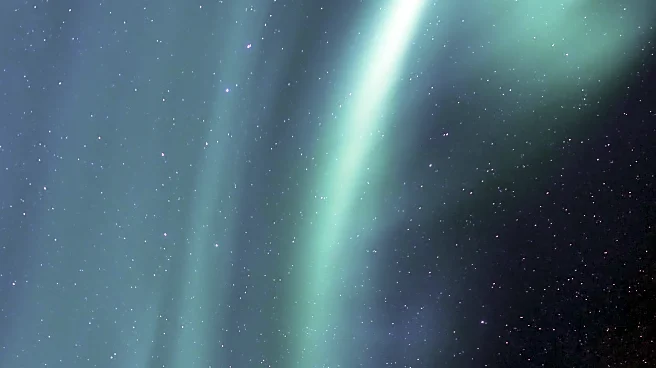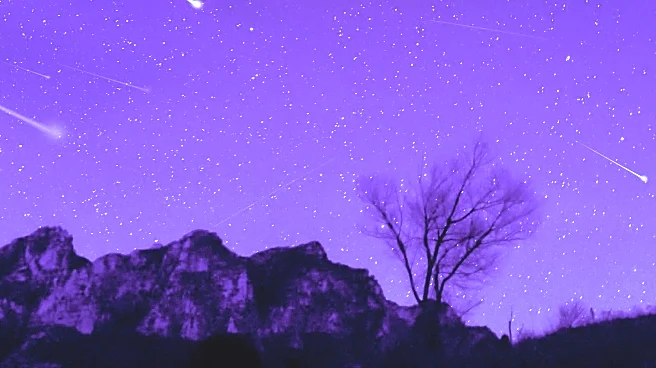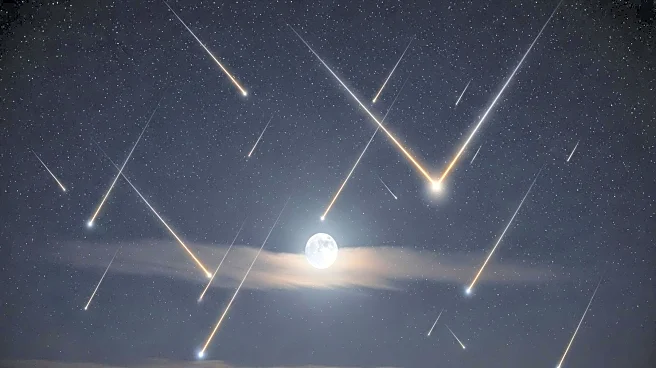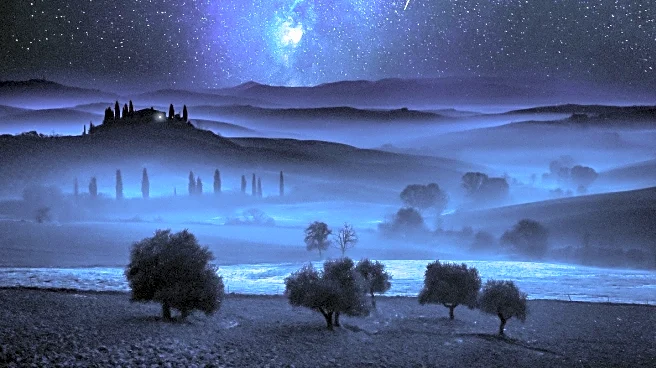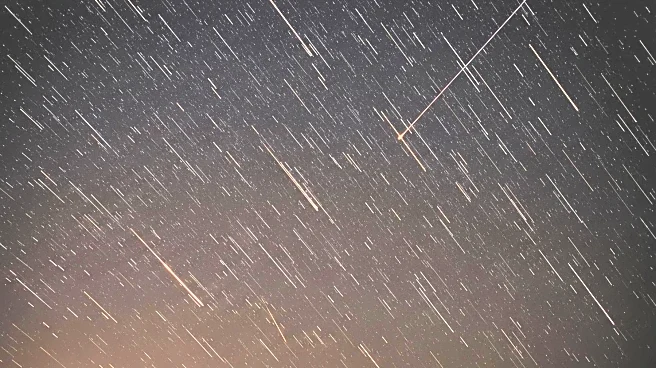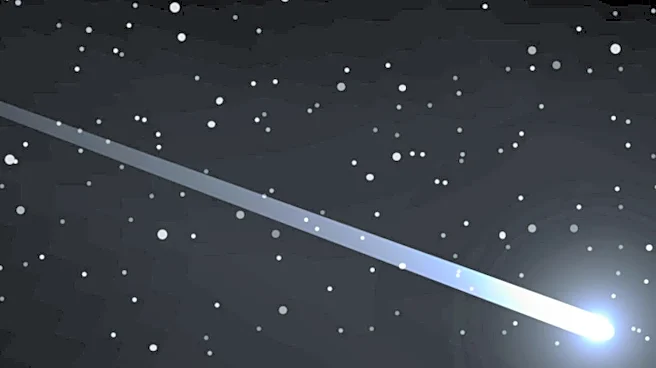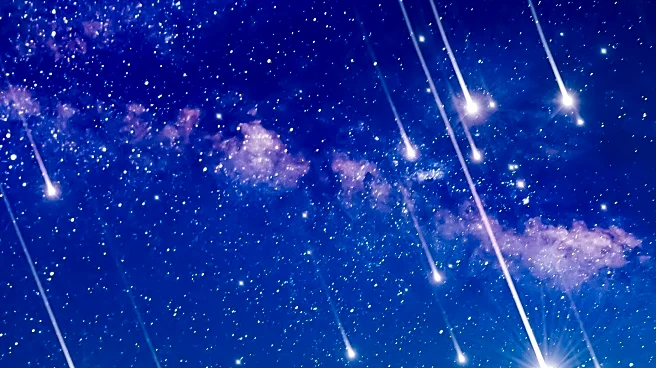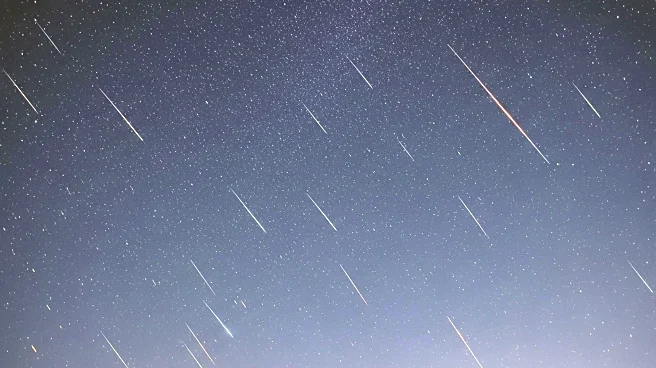What is the story about?
What's Happening?
The Draconid meteor shower is set to peak on October 8, 2025. This annual celestial event is caused by debris from comet 21P/Giacobini-Zinner. Typically, the Draconids produce around 10 meteors per hour, but this year, visibility may be reduced due to a bright waning gibbous moon. The shower is best viewed in the evening, shortly after sunset, when the constellation Draco is high in the sky. Observers in North America and Europe are advised to find dark locations away from city lights to maximize their chances of seeing the meteors.
Why It's Important?
The Draconid meteor shower offers a unique opportunity for both amateur and professional astronomers to observe a meteor shower that is less intense but still captivating. The event highlights the dynamic nature of our solar system and provides insights into the behavior of cometary debris. For the public, it serves as an accessible way to engage with astronomy, fostering interest in space science. The shower's unpredictability adds an element of excitement, as past years have occasionally produced unexpected meteor outbursts.
What's Next?
Following the Draconids, the Orionid meteor shower is expected to peak later in October, offering another chance for skywatchers to observe meteors. The Orionids are anticipated to produce more meteors per hour and will coincide with a new moon, improving visibility. This sequence of meteor showers provides ongoing opportunities for public engagement with astronomy and for scientists to study the composition and frequency of meteors.
Beyond the Headlines
The Draconid meteor shower, while not as prolific as others, is significant for its connection to comet 21P/Giacobini-Zinner. Each meteor is a fragment of the early solar system, offering clues about the evolution of comets and planetary atmospheres. The event underscores the importance of preserving dark skies, as light pollution can significantly hinder astronomical observations.
AI Generated Content
Do you find this article useful?
